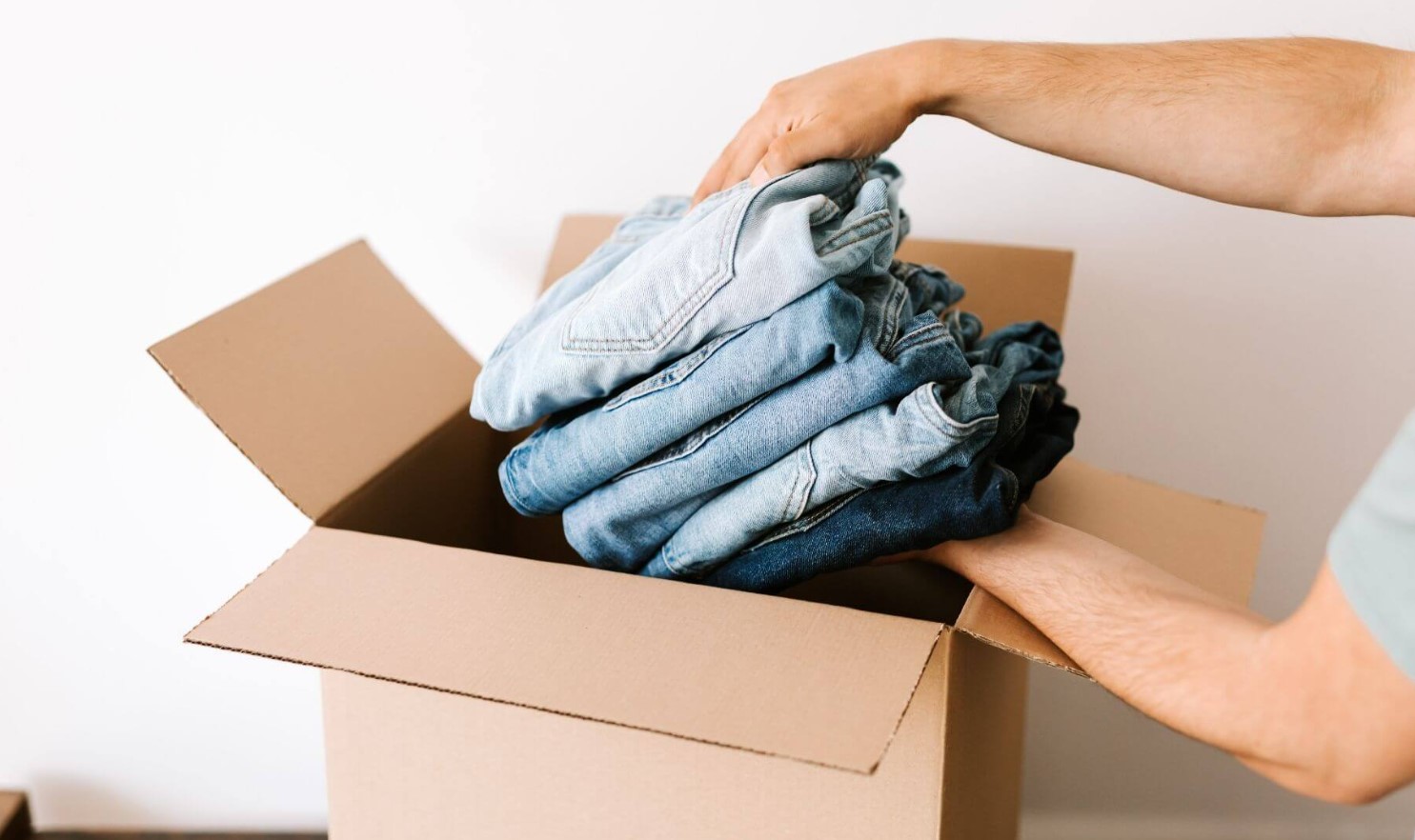Moving to a new home is an exciting adventure, but it can also be a daunting task. One common challenge that arises during the moving process is deciding what to do with unwanted clothes. Whether it’s clothes that no longer fit, items that have fallen out of style, or garments you simply no longer need, finding the right solution for your unwanted clothes is crucial. Instead of letting them take up valuable space in your new home, here are some practical and eco-friendly options to consider.
Donate to Local Charities
One of the most impactful ways to deal with unwanted clothes is to donate them to local charities. Not only does this help declutter your wardrobe, but it also supports those in need within your community. Charitable organizations often distribute donated clothes to individuals who lack proper attire or are experiencing financial difficulties. By donating, you can make a positive impact and help improve someone else’s life. Some popular charities that accept clothing donations include Goodwill, Salvation Army, and Dress for Success.
Hosting a Clothing Swap Party
Another fun and socially engaging option for dealing with unwanted clothes is to host a clothing swap party. This concept allows you and your friends to exchange garments, giving everyone a chance to refresh their wardrobe without spending a dime.
To organize a successful clothing swap, choose a convenient location, invite friends who share similar tastes, and set some ground rules. Not only does this option promote sustainability and recycling, but it also fosters a sense of community.
Sell or Consign Your Clothes
If you’re looking to make some extra cash while getting rid of unwanted clothes, consider selling or consigning them. Online platforms like Poshmark, eBay, or Depop provide a convenient way to sell your clothes to a broader audience, while consignment stores offer a more traditional approach. Selling your clothes online allows you to reach potential buyers worldwide, while consignment stores provide a physical space to showcase your items.
Take high-quality photos, write detailed descriptions, and set a reasonable price to attract buyers. Selling or consigning your clothes not only helps you declutter but also puts some money back in your pocket.
Repurpose or Upcycle
Rather than discarding your unwanted clothes, consider repurposing or upcycling them into new items. Get creative and explore different DIY projects that can breathe new life into old garments. For example, you can transform an old t-shirt into a stylish tote bag, or repurpose jeans into trendy shorts. The possibilities are endless. Repurposing clothes not only allows you to express your creativity but also reduces textile waste, making it an eco-friendly option.
| Heading | Description |
| What is Repurposing? | Repurposing involves finding alternative uses for old textiles rather than disposing of them. |
| Benefits of Repurposing | 1. Reduces textile waste and landfill accumulation. |
| 2. Allows for creative expression and personalization. | |
| 3. Saves money by giving new life to existing items. | |
| Repurposing Ideas | 1. Turn old t-shirts into reusable shopping bags. |
| 2. Transform jeans into stylish shorts or skirts. | |
| 3. Create patchwork quilts using fabric scraps. | |
| 4. Use worn-out towels as cleaning rags. | |
| Upcycling Explained | Upcycling involves taking old textiles and transforming them into higher-value products. |
| Benefits of Upcycling | 1. Reduces waste and promotes sustainability. |
| 2. Creates unique and one-of-a-kind items. | |
| 3. Encourages resourcefulness and creativity. | |
| Upcycling Ideas | 1. Repurpose a sweater into a cozy pet bed. |
| 2. Turn fabric scraps into colorful accessories like hair bows or headbands. | |
| 3. Transform an old tablecloth into a stylish tote bag. | |
| 4. Use decorative patches to revive worn-out jeans or jackets. |
Repurposing or upcycling textiles offers a range of benefits, from reducing waste and saving money to fostering creativity and individuality. By repurposing items, you can find new uses for old textiles and give them a fresh lease on life. Upcycling takes this concept further by transforming textiles into higher-value products.
Whether you turn old t-shirts into shopping bags, transform jeans into fashionable garments, or repurpose towels into cleaning rags, there are countless ways to repurpose textiles. Upcycling offers even more opportunities, such as creating unique pet beds, fashionable accessories, or stylish tote bags. These practices not only contribute to waste reduction but also showcase your resourcefulness and creativity.
So, the next time you come across unwanted textiles, think beyond disposal and explore the possibilities of repurposing or upcycling. You’ll be amazed at how a little creativity can turn old items into something new and exciting.
Recycle Textiles
Recycling textiles is an important step towards a more sustainable future. Instead of throwing away damaged or worn-out clothes, you can contribute to the circular economy by recycling them. Here’s a closer look at how textile recycling works:
- Understanding Textile Recycling: Textile recycling involves the process of collecting, sorting, and processing old or unwanted textiles to create new products. It is an eco-friendly alternative to discarding clothes in landfills.
- Collection Programs: Many cities and communities have textile recycling programs in place. These programs provide designated collection points or curbside pickup services where you can drop off your unwanted textiles. Some recycling programs even accept clothing donations that are not in wearable condition.
- Sorting and Grading: Once the textiles are collected, they undergo a sorting process. Items that are still in good condition can be sorted for reuse, while damaged or unusable items are set aside for recycling.
- Recycling Methods: There are different methods for recycling textiles. One common approach is mechanical recycling, where the fabrics are shredded into fibers and then processed to create new yarn or fabric. Another method is chemical recycling, which involves breaking down the textiles into their chemical components to produce new materials.
- End Products: The recycled textile fibers can be used to make a variety of products. They can be blended with new fibers to create fabrics for clothing, upholstery, or other textile goods. Recycled textiles are also used in non-apparel products like insulation, cleaning cloths, and automotive materials.
- Environmental Benefits: Textile recycling has significant environmental benefits. By diverting textiles from landfills, it helps reduce the amount of waste generated and conserves valuable landfill space. Recycling textiles also saves energy, water, and resources that would be required to produce new textiles from scratch.
- Promoting a Circular Fashion Economy: Recycling textiles is an integral part of building a circular fashion economy. It encourages the reuse and recycling of materials, minimizing the need for virgin resources and reducing the environmental impact of the fashion industry.
- Individual Contribution: You can make a difference by actively participating in textile recycling. Instead of throwing away unwanted clothes, consider donating them to textile recycling programs or thrift stores. By doing so, you give your clothes a second life and contribute to a more sustainable future.
Remember, recycling textiles is a simple yet impactful way to reduce waste and support sustainable practices. By embracing textile recycling, you can play a vital role in preserving the environment and creating a more sustainable fashion industry.
Properly Dispose of Damaged Clothes
In some cases, you may come across clothes that are beyond repair or reuse. It’s important to handle these items responsibly to minimize their impact on the environment. Instead of throwing them in the trash, look for textile recycling programs specifically designed for damaged clothing. These programs ensure that even the most worn-out garments are repurposed or recycled appropriately. By choosing responsible disposal methods, you can contribute to a more sustainable future.
Dealing with unwanted clothes when moving doesn’t have to be a burden. By considering the options mentioned above, you can find practical and eco-friendly solutions. Whether you choose to donate, host a clothing swap party, sell or consign, repurpose, recycle, or dispose of your unwanted clothes responsibly, each approach contributes to reducing waste and making a positive impact. So, as you embark on your moving journey, take the opportunity to declutter your wardrobe while embracing sustainability.
FAQs
- Can I donate torn or stained clothes?
- Yes, some charities accept torn or stained clothes, as they can still be recycled or repurposed. However, it’s best to check with the specific charity beforehand.
- How can I find local charities that accept clothing donations?
- You can search online for local charities or use directories that specialize in connecting donors with charitable organizations.
- Are clothing swaps only for specific types of clothing?
- No, clothing swaps can include various types of clothing, including dresses, shirts, pants, accessories, and more. The goal is to exchange items that are in good condition and still wearable.
- What are the advantages of selling clothes online versus consignment stores?
- Selling clothes online allows you to reach a broader audience and potentially earn more money. Consignment stores provide a physical location for showcasing your items and may offer additional services like pricing and marketing.
- What types of items can be created through upcycling?
- Upcycling offers endless possibilities. You can turn old clothes into bags, pillows, quilts, or even use the fabric for crafts like jewelry-making or patchwork.

